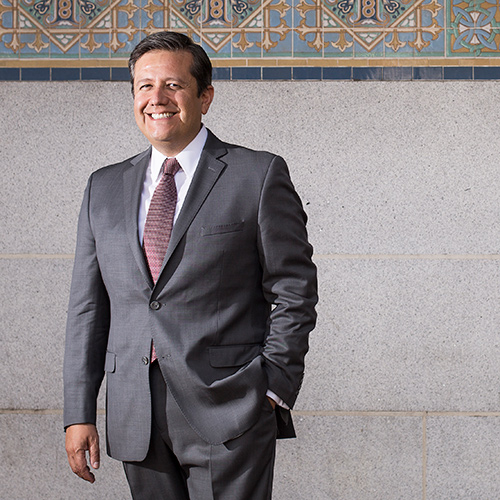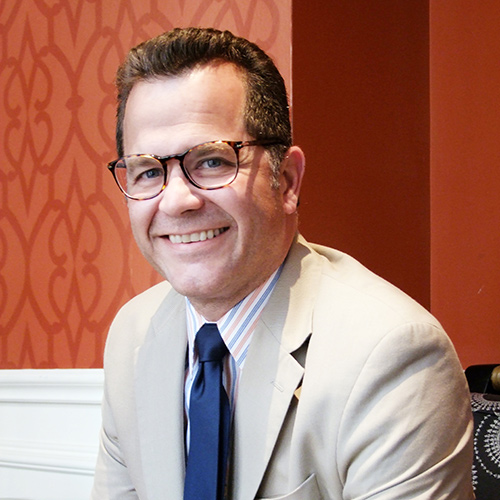Armstrong World Industries, a global leader in the design and manufacture of floor and ceiling products, is a nimble player in the construction and building materials space. They are in the midst of separating the company into two independent, publicly traded companies through a tax-free spin-off of their flooring business.
This effort will create two stronger companies from the 150-year-old brand that has become synonymous with exceptional residential and commercial interiors around the world. Despite the abundance of corporate mergers and acquisitions that are featured in news headlines, splitting a successful business into two companies is actually a common way that many companies today are creating value for their various stakeholders.
“By separating into two companies, each one can focus on their core business and allow each company greater flexibility with respect to strategic options,” says Amy Fernandez, Armstong’s VP of intellectual property and associate general counsel.
In Armstrong’s case, the separation involves not just a peripheral product line being divested from its parent. Because the flooring and ceiling businesses are two equal halves, the company is being split down the middle, meaning a major organizational shuffle is underway. “The thinking behind the separation is that we really are operating as two companies already,” Fernandez says. “We essentially have no overlap in terms of manufacturing facilities, supply chain or distribution partners.”
It may be counterintuitive, but vertical integration of product lines doesn’t always make sense in the building industry. Due to the idiosyncrasies of construction methods, there is a significant time gap between when an owner or contractor makes the decision about which flooring products to use versus which ceiling materials to use, so attempting to sell both in a single sale is not a viable strategy.
“You would think it would work that way, but that’s just not how it works in the industry,” Fernandez says. “So we have two completely separate sales groups that work with different independent distribution partners.”
The rationale behind making an amicable, constructive split also stems from an understanding of investor interests. Fernandez says many of Armstrong’s investors are more interested in one side of the business or the other. Differentiating the two companies in the marketplace allows them to have greater control over their investment choices, and each company, once separate, will likely attract different types of investors. The split should be complete some time in the first quarter of 2016.
Protecting IP Assets
Fernandez is responsible for setting up the company’s worldwide intellectual property strategy, which has significant implications in the spin-off. Trademark law in the US requires that any trademarked brand have single ownership, a precept that provides consistency and confidence for consumers when making choices in the marketplace. However, because of the tremendous equity built up in the Armstrong logo, it was natural that both companies would want to continue to benefit from using it. Figuring out how to make that work from a legal perspective fell largely on Fernandez’s shoulders. “For consumers to recognize a brand, it must come from a unique and authentic source. If too many people are using the brand name without it being managed by one owner, the brand gets lost.”
The solution was for Armstrong World Industries to retain ownership of the brand and provide a license to the new company, Armstrong Flooring, Inc., for its use. Fernandez’s team was charged with working out the agreement between the two companies for the use of the logo and all related intellectual property, including the company’s trademark colors and their slogan: “Inspiring Great Spaces.”
“By separating into two companies, each one can focus on their core business and allow each company greater flexibility with respect to strategic options.”
Fernandez has worked closely with her colleagues to determine which patents, product names, and contractual obligations will go with each company and what the terms and conditions will be for each. In some cases, it will be the new company that will hold ownership over particular pieces of IP, who will then license those items to Armstrong World Industries, rather than the other way around. “There’s a great deal of legal work that goes into separating two companies,” Fernandez says.
Fernandez has been developing Armstrong’s IP portfolio for three years, so she knows the material like the back of her hand. When she came on-board, the company was in the midst of a major research and development (R&D) push, but there was “a bit of a lull in terms of filing patents and trademarks,” she says. “They were doing so much innovation and product development, but it just wasn’t a focus of the company at the time to protect that innovation with intellectual property.” She implemented new procedures with the R&D teams to ensure that their work would be accompanied by the necessary legal process to better capture the innovation and determine what the company should invest in terms of patents. A similar protocol was developed with the marketing teams regarding trademarks.
Armstrong operates 32 plants in nine countries, which makes for an added layer of complexity in the separation. Fernandez’s team has had to deal with an on-going counterfeiting issue affecting their products in China, as well as patent infringement lawsuits domestically, making for a mile-high list of matters that must be resolved before the split can occur and putting an immense strain on human resources.
Of course the split itself has profound implications for the corporate level staff—understanding who is going to go where and what that process will be is on everyone’s minds. “We’re not all going to be at the same company anymore, and there’s a lot of anxiety that can come with this type of organizational change,” she says. “But it is my top priority to make sure that the anxiety is dealt with in the best way and that I keep the lines of communication open with my team.”
Cultivating Character
Fernandez’s role as an executive-level attorney is a world away from her childhood in Mexico, yet her upbringing has everything to do with the confidence and ease that she brings to it. Her grandfather was a coal miner in a rural area of Coahuila, Mexico, and her mother was the only one of nine children who landed stateside. As the single mother of two and lacking a college education, Fernandez’s mother managed to build a life for her family in San Antonio and create the conditions for her children to succeed in school and get accepted at top-tier universities. Fernandez says that her mother’s determination to create the best possible life for her children is one of her greatest inspirations.
“She got to San Antonio, saw a building that she liked, walked into it, and asked for a job,” Fernandez says. “It turned out it was a bank—10 years later she had her graduate degree in finance and was running their international banking department.”
Fernandez earned an engineering degree from the University of Pennsylvania and then went back for her law degree a few years later after stints at Johnson & Johnson and Blommer Chocolate. At every step of the way, other mentors have come into her life and support has come in innumerable forms. As an undergrad, Fernandez organized a Latin dance troupe with a few friends, “which really helped me to bring some of my culture to my new environment,” she says (it’s called Onda Latina, and it still exists today).
During one of her law school internships through the Philadelphia Diversity Law Group, her supervisor Michaune Tillman, who is now general counsel at another Philadelphia area company, was another guiding light: “Connecting with a powerful woman of color early in my legal career was so inspirational; she’s one of the most driven people that I’ve ever met,” Fernandez says. “That’s why I also want to do the same thing—to give back. I think the biggest difference between the people that just do okay and the people that really excel is passion. You have to love what you do.”

